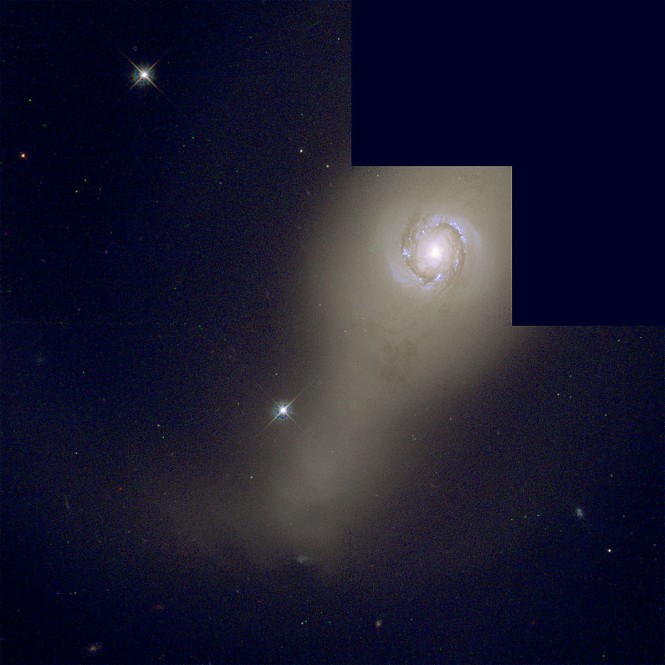I enjoy creating color images from three grayscale images. The post linked here will explain how to create color astronomical images. The colors assigned are not necessarily what the human eye would see, but are used to bring out details. Visit the gallery of previous Astro-Images. Unless otherwise noted, all images are made by me using three original grayscales from the Hubble Legacy Archive.
![]()
NGC 3081
It doesn’t look like a spiral galaxy. The bright core is surrounded by a glowing bluish ring. NGC 3081 is about 86 million light years from us in the constellation of Hydra (The Sea Serpent). The outer ring has numerous blue knots where new stars are forming. Blue around the core also indicates new star formation. The bright glow in the core center is thought to be caused by a supermassive black hole as it takes in material. This is a good example of the Seyfert class of galaxies.
![]()
NGC 4314

NASA/ESA and McDonald Observatory
Prior to the Hubble Space Telescope, this barred spiral galaxy was seen as faint with a bright core similar to NGC 3081 above. The background image at right is from 1986 at McDonald Obs. It is found in the constellation Hydra.
Outlined in yellow is the image frame used by Hubble. My color composite below used three greyscale images from Hubble in that region. Details in the small ring of the core show bright knots of blue. Young star formation is taking place there.
This galaxy is missing the large outer ring of blue knots where young stars form as in NGC 3081 above. Why some galaxies have the outer ring, and some do not, is a subject of ongoing research.
NGC 5315
This nebula lies about 7,000 light years from Earth in the constellation of Circinus in the southern skies far to the south. It is the gaseous remnant formed by a star like the Sun near the end of its lifetime. These stars blast off outer layers of gas as they violently heat up causing the gases to excite and glow. They form a sort of hot bubble of gas around the remnant star in the center.
This nebula was an accidental discovery. The Chandra X-Ray Observatory spacecraft was pointing detectors at a nearby region in 2003. The aimpoint in the image below is marked. This nebula NGC 5315 appeared as a source of x-rays to the side, but out of focus. A closer look by Hubble in 2007 revealed the true nature of the object in my composite image above.





Amazing and mind-boggling how far and clearly we can see into space!
And consider the thin layer of atmosphere where we live. We are so small. Truly amazing what we can do.
I wish more folks realized the gift we have here.
As always … love deep space pics.
The nebulae always are spectacular. I’m glad you enjoy doing this, so we can enjoy it, too.
I have more in the works. It is a fun project. I am glad you and others appreciate them.
Alway interesting posts! Wonderful photos!